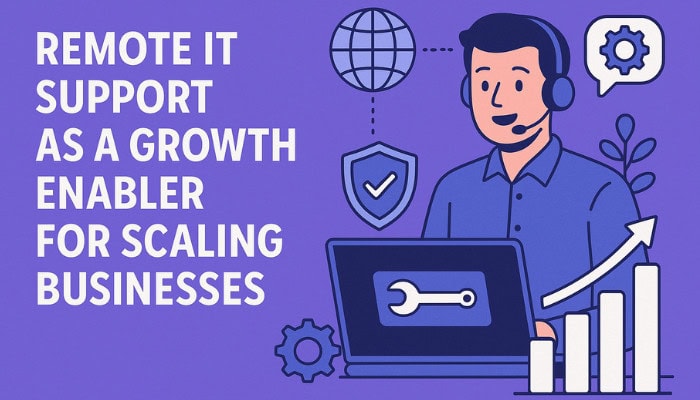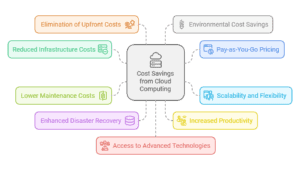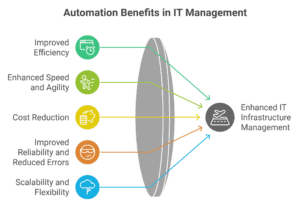As the digital landscape continues to evolve in 2025, data security and remote connectivity have become top priorities for businesses across Ontario. From small startups to established businesses, an increasing number of organizations are turning to Virtual Private Networks (VPNs) to secure sensitive information and maintain seamless remote access.
With hybrid work models becoming the norm, relying on a basic VPN setup or outdated network configurations is no longer sufficient. Instead, companies need advanced VPN management strategies that are secure, scalable, and tailored to their unique needs. At the same time, rising cybersecurity threats, changing compliance standards, and growing user bases are pushing businesses to seek professional help for setting up and managing their VPN infrastructure.
This comprehensive guide explores the essentials of VPN setup and management services in Ontario—what they are, why they matter, and how to choose the right solution to future-proof your operations in 2025 and beyond.
What is a VPN, and why does your business need one?
A Virtual Private Network (VPN) is a secure communication tunnel that encrypts data traveling between a user’s device and a business network. VPNs allow employees to safely access corporate systems and applications from remote locations, making them essential for today’s distributed workforces.
For Ontario-based businesses, VPNs are beneficial for:
- Protecting sensitive client and internal data
- Ensuring secure access to on-premise or cloud-based servers
- Maintaining operational continuity during disruptions
- Complying with Canadian data privacy laws
While consumer VPNs offer privacy for individual users, business-grade VPNs are designed to support many users with centralized management, higher encryption standards, and customizable access controls.
VPN Setup Considerations for Ontario Businesses
Setting up a secure and scalable VPN requires more than just installing software; it also involves configuring and managing the network. Here are the key elements Ontario businesses must evaluate before deployment:
1. Deployment Type
- On-premise VPNs provide more control but require internal resources
- Cloud-based VPNs are easier to scale and manage remotely
2. Device and User Coverage
Consider the number of remote employees, the types of devices (such as laptops, phones, and tablets), and whether the VPN needs to be integrated with Bring Your Own Device (BYOD) policies.
4. Existing Infrastructure Compatibility
Ensure compatibility with firewalls, routers, and identity management systems.
5. Compliance Requirements
Setup must align with industry-specific and federal laws, particularly around data storage and user access logs.
The Role of Managed VPN Services
VPNs are powerful tools, but they require constant monitoring and optimization to stay effective. This is where managed VPN services come in.
A managed service provider (MSP), such as AccuIT, handles everything from initial setup to ongoing maintenance, allowing internal teams to focus on their core operations. Key offerings include:
- 24/7 network monitoring for downtime and intrusion detection
- Configuration and performance tuning
- Routine software updates and patching
- Secure onboarding/offboarding for employees
- Policy management and scalability planning
For Ontario businesses without a dedicated IT department, managed VPN services ensure enterprise-level protection without the overhead.
Key Features to Look for in VPN Management Services
Not all managed VPN providers are equal. Here’s what to prioritize when choosing a provider in Ontario:
1. Centralized Management Console
A dashboard that gives IT teams real-time visibility into users, data traffic, and potential threats.
2. Strong Authentication Controls
Support for Multi-Factor Authentication (MFA) and integration with identity providers.
3. Traffic and Geo-Control
Tools to restrict access based on location, time of day, or device type to minimize threats.
4. High Availability and Failover
Redundant servers to ensure uptime even if part of the system goes offline.
5. Audit Logs and Reporting
Detailed records to meet internal and external compliance audits.
Ensuring VPN Security & Regulatory Compliance in Ontario
Canadian businesses must comply with the Personal Information Protection and Electronic Documents Act (PIPEDA) and provincial privacy laws. For Ontario-based companies, this means ensuring:
- Data is encrypted end-to-end
- Logs are stored securely and only for as long as needed
- User access is granted based on role or business function
- VPN solutions do not route data through countries with weaker privacy protections
Businesses in healthcare, law, or finance must take additional precautions, including adhering to industry-specific encryption standards and maintaining documentation for every instance of remote access.
Future-Proofing Your VPN Strategy for 2025 and Beyond
The VPN landscape is changing rapidly. To remain competitive and secure, Ontario businesses should keep an eye on:
1. AI-Powered VPN Monitoring
Advanced VPN solutions now utilize AI to identify unusual behavior, flagging potential insider threats or compromised credentials in real time.
2. Zero Trust Integration
VPNs are now part of larger Zero Trust frameworks, where every access request is verified, even from within the network.
3. Support for Hybrid Clouds
Modern businesses use multiple cloud providers. VPN solutions need to bridge access across cloud providers while maintaining visibility and control.
4. Mobile Device Optimization
As more work is done on mobile devices, VPNs need to offer seamless performance across varying network conditions.
Conclusion
With cyber threats on the rise and flexible work here to stay, VPNs are no longer optional for Ontario businesses—they’re foundational. Setting up and managing a robust VPN infrastructure isn’t a simple task. It requires a thoughtful approach that combines technical expertise, awareness of compliance, and a long-term strategy.
By partnering with a professional VPN setup and management service in Ontario, businesses can mitigate risk, enhance productivity, and confidently meet the digital demands of 2025 and beyond.
Work with a trusted Ontario-based VPN provider to safeguard your business.
At AccuIT, we offer superior VPN Setup and Management Services at competitive prices. Call us now! – 1-866-409-8647, 1 905-963-8746












